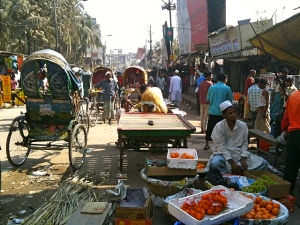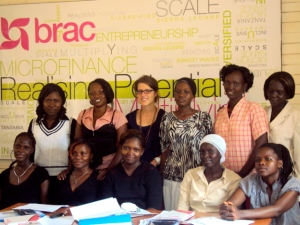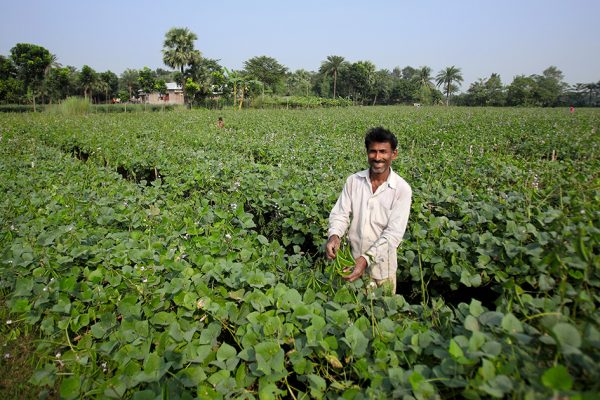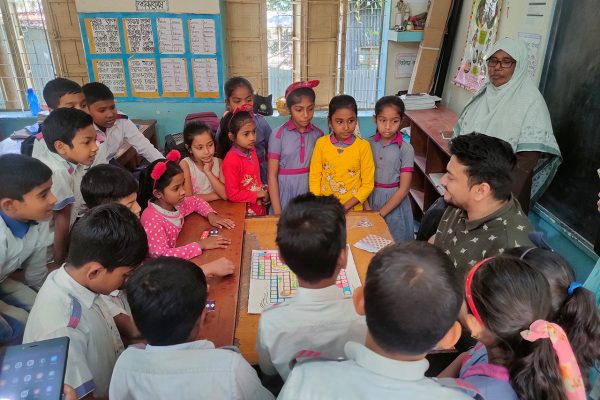More than Microfinance: How BRAC Uganda Empowers Adolescents
Reading Time: 3 minutes
A Bengali organization founded almost 40 years ago, BRAC is one of the largest NGO’s in the world. BRAC does tremendous work in and outside of Bangladesh, and has programs promoting economic development, health, education, gender justice – the list goes on. When I found out I would be working with BRAC this past April I was excited since it is such a pioneering organization, but I was also really looking forward to working with BRAC since I have a soft spot in my heart for Bangladesh. I had the chance to live in Bangladesh for four months last year as a social business intern at the Yunus Centre, and my time in the country was certainly life altering.
The blow post is by Michele Wehle, a Kiva Fellow working in Kampala, Uganda. You can see the original post on the Kiva: Stories from the Field blog.
 |
| Daily life in Bangladesh, the birthplace of BRAC |
A Bengali organization founded almost 40 years ago, BRAC is one of the largest NGO’s in the world. BRAC does tremendous work in and outside of Bangladesh, and has programs promoting economic development, health, education, gender justice – the list goes on. When I found out I would be working with BRAC this past April I was excited since it is such a pioneering organization, but I was also really looking forward to working with BRAC since I have a soft spot in my heart for Bangladesh. I had the chance to live in Bangladesh for four months last year as a social business intern at the Yunus Centre, and my time in the country was certainly life altering. Dhaka was not an easy place to live, the sheer number of people is overwhelming and unlike anything I have ever experienced (imagine fitting half the US population into Iowa). The Bengali hospitality and warmth made my time there special however. And truthfully, I couldn’t wait to show off the three Bengali phrases and five words I knew! Apart from my excitement, I realized I didn’t know much about BRAC and that I would have alot to accomplish once in Uganda.
Reality on the ground: The situation is bleak for many adolescents in Uganda. A report by USAID stated that 14% of Ugandan children have lost one or more parents in the past decade due to the conflict in the north and/or to HIV/AIDS. Many young adults have difficulty obtaining meaningful employment, even with a University degree, and for those who do not complete primary and secondary school finding substantial employment is even harder. These hurdles are why BRAC’s Empowerment and Livelihoods for Adolescents (ELA) program is so important. Adolescent girls between the ages of 13-22 can join an ELA “club” and learn essential life skills that touch on family planning, financial literacy, and leadership. The goal of the ELA program is to make girls productive members of society, and to give them a chance at improving their lives,
 |
| ELA loan recipient. Photo provided by BRAC Uganda. |
What about the boys? Since the BRAC ELA program began in Uganda in 2008, 690 clubs for girls have been started which have reached almost 25,000 adolescents. While the focus of the ELA program is on vulnerable adolescent girls, the program has placed nearly 300 boys through vocational training. I am a proponent for lifting up vulnerable adolescents, girls in particular, but I do think it is imperative that vulnerable boys not be forgotten. BRAC’s vocational training program for boys not only trains orphaned/vulnerable boys in a variety of occupations, including electrical installation, carpentry, and plumbing, but also assists in job creation and job placement for the boys upon the completion of the training. Without this assistance and mentorship, the road these boys would have to travel to become men would be even more difficult and frustrating. Focusing on one half of gender (typically females) can inadvertently set that focused half back and erase any gains that have been made. Although ELA primarily focuses on girls, it was refreshing to see BRAC reaching out to disadvantaged boys.
Women helping women: All of BRAC’s ELA credit officers and program managers are women, which helps solidify the bond and trust girls seek when entering the program. Since many sensitive and possibly taboo topics are discussed, having an accomplished woman to look up to and chat with may make many of these girls days a little easier. If anything, the ELA program provides a refuge for many disadvantaged adolescents, as well as a sense of purpose, some hope, and a reason to lift their heads a little higher than before.
 |
| KF Michele Wehle, Kiva Coordinator Sauda Masibo, and ELA Credit Officers at the BRAC Uganda country office |





